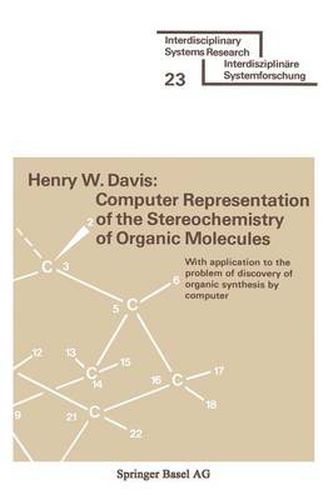Readings Newsletter
Become a Readings Member to make your shopping experience even easier.
Sign in or sign up for free!
You’re not far away from qualifying for FREE standard shipping within Australia
You’ve qualified for FREE standard shipping within Australia
The cart is loading…






This title is printed to order. This book may have been self-published. If so, we cannot guarantee the quality of the content. In the main most books will have gone through the editing process however some may not. We therefore suggest that you be aware of this before ordering this book. If in doubt check either the author or publisher’s details as we are unable to accept any returns unless they are faulty. Please contact us if you have any questions.
The role of the computer in the practice of organic chemistry has been firmly established over the past decade. Its uses as a large scale information storage and retrieval device in chemistry have been too numerous to mention. More recently, the applicability of computers to the problem of discovering valid and reasonable synthesis routes for organic molecules has been demonstrated. This has been both as an adjunct to the 1 chemist in the on-line interactive mode ,2,3 and also as a wholly computer-directed system seeking to simulate the intelligent prob- 4 lem-solving activity of the human organic synthetic chemist. ,5 In all of these computer applications to organic chemistry, it has been necessary to devise some computer-compatible repres- tation of an organic molecule that is both canonical and c- venient for table look-ups. This is in order that entities that have been constructed at different times under different circumstances can be identified and classified, with identical molecules being recognized as such even if their connection matrices list the elements of the molecule in different orders. E. J. Corey and W. T. Wipke, Science, 166, 178 (1969). 2 E. J. Corey, W. T. Wipke, R. D. Cramer III and W. J. Howe, J. Americ. Chern. Soc. , 94, 421 (1972) and 431 (1972). 3 E. J. Corey, R. D. Cramer III and W. J. Howe, ~. Americ. Chern. Soc. , 94, 440 (1972). 4 H. L. Gelernter, N. S. Sridharan and A. J.
$9.00 standard shipping within Australia
FREE standard shipping within Australia for orders over $100.00
Express & International shipping calculated at checkout
This title is printed to order. This book may have been self-published. If so, we cannot guarantee the quality of the content. In the main most books will have gone through the editing process however some may not. We therefore suggest that you be aware of this before ordering this book. If in doubt check either the author or publisher’s details as we are unable to accept any returns unless they are faulty. Please contact us if you have any questions.
The role of the computer in the practice of organic chemistry has been firmly established over the past decade. Its uses as a large scale information storage and retrieval device in chemistry have been too numerous to mention. More recently, the applicability of computers to the problem of discovering valid and reasonable synthesis routes for organic molecules has been demonstrated. This has been both as an adjunct to the 1 chemist in the on-line interactive mode ,2,3 and also as a wholly computer-directed system seeking to simulate the intelligent prob- 4 lem-solving activity of the human organic synthetic chemist. ,5 In all of these computer applications to organic chemistry, it has been necessary to devise some computer-compatible repres- tation of an organic molecule that is both canonical and c- venient for table look-ups. This is in order that entities that have been constructed at different times under different circumstances can be identified and classified, with identical molecules being recognized as such even if their connection matrices list the elements of the molecule in different orders. E. J. Corey and W. T. Wipke, Science, 166, 178 (1969). 2 E. J. Corey, W. T. Wipke, R. D. Cramer III and W. J. Howe, J. Americ. Chern. Soc. , 94, 421 (1972) and 431 (1972). 3 E. J. Corey, R. D. Cramer III and W. J. Howe, ~. Americ. Chern. Soc. , 94, 440 (1972). 4 H. L. Gelernter, N. S. Sridharan and A. J.